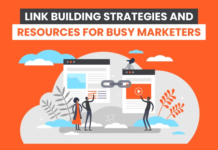You probably have seen companies pay a tidy sum of money to have case studies done, for one reason or the other. The question is, do these case studies really work? Do they achieve their purpose?
Well, in this case study, you will see how renowned SEO guru Neil Patel, performed three case studies on his website NeilPatel.com, and was able to grow his sales by 185%.
In the beginning, he was not too sure about the results he would get, but he went on and did the case studies anyway.
The goal of the whole case studies project was quite simple: GENERATE MORE LEADS!
The results were quite surprising since he didn’t truly generate as many leads as he had hoped, but in the end, a whopping 185% increase in sales.
According to Neil Patel, most companies that commissioned case studies did not know how to effectively leverage them to meet their intended goals. This rendered them ineffective and a waste of resources.
So how did Neil optimize his case studies for lead generation?
Let us dive deeper and understand!
Case Studies Should Be For Revenue Generation and NOT Lead Generation
We shall begin by examining a Case Study of how Neil Patel helped Timothy Sykes grow his traffic by 26% and helped his website earn an extra $1.2 Million in profit every year.
Neil Published a case study covering how he helped Timothy Sykes achieve such a huge feat.
The Problem, according to the case study, was that Timothy Sykes, a person who taught people how to successfully trade online, sensed that his site was underperforming.
He, therefore, contacted Neil Patel to help him improve his traffic and conversion rates.
The results eventually led to an increase in traffic by 25%, and the conversion rate by 250%. This way, Tim made $1.2 million that year.
When Neil published the Case Study, it was more than 2,200 words, and it seemed to scroll on forever. The reason is that he went into too much detail on the steps he took to help Tim achieve such amazing goals.
Today, Neil says that he has summarized the case study in about 600 words.
Neil justifies the use of such a long case study by explaining that in his mind, there were a lot of fake case studies out there, and he felt that going into detail would make his case study feel more GENUINE.
He felt that a long and detailed case study would bring him a lot of traffic and increase his conversions.
Well, he was wrong.
When he checked his Google Analytics, he found that people were not reading his long case studies to the end. They simply got somewhere in between and dropped off.
The Analytics showed that on average, people spent 2 minutes and 27 seconds reading the full 2,286-word case study.
After he summarized it into 615 words, then people would spend an average of 2 minutes and 18 seconds reading the FULL 615 words.
Another upside of shortening the case study is that it increased the number of leads that they generated by up to 39%.
This was really surprising; getting more leads by deleting words from the case study.
Neil Patel was not fully satisfied with this increase in the number of leads generated.
As he goes on to state, the number of leads that the case study generated was glaringly insignificant compared to his minimal homepage for his website, where he asks visitors if they want more traffic.
If you have ever visited his website, you must have come across that introduction, where he asks if you want more traffic for your website.
He attests the success of the homepage to the fact that it is able to quickly tell website owners, how many errors they have on their site, then they are quickly led on to the lead generation page, and that is only if they have enough errors that warrant correction.
Neil says that a case study page cannot be as simple as a homepage, simply because it is supposed to be a case study, and should have a lot of information ready, right out of the bat.
Neil tested everything.
He tried showcasing the “Problem” and “Results” at the top of the case study page, but this did nothing to increase conversions.
Neil went ahead to add testimonials within the case study, to add more credence to the statement contained therein, and this only improved lead generation by a mere 11%
To try and boost his efforts, Neil added a lead generation form at the lower end of the case study, but this only improved his data by 8%, and this was in no way as significant as he had hoped.
He then tested using an exit popup, which – surprisingly – increased his lead generation by 64%. You would have expected Neil to be happy but he was not. The reason was that the quality of the leads was too low, so he removed the exit popup.
Neil also tried using a scrolling “RESERVE NEIL NOW” button, which increased the number of new people signing up by 49% and also generated a somewhat decent number and quality of leads.
Using conversion optimization techniques, Neil was able to generate more leads, but not to the level that he had anticipated.
His NeilPatel.com homepage generates the highest volume of traffic and has a conversion rate of 843% higher than the case study page.
In addition, the quality of the leads generated on his homepage is 188% higher than the leads generated through the case study page.
Through his rigorous testing, Neil Patel learned that case studies can help you generate leads, but they are not necessarily as powerful at accomplishing this task as a simple landing page, like the one he has on his site.
Neil finally states that this does not mean that you do not use case studies, why? He was able to grow his revenue by 185%
Lesson Learned
Case Studies Can Be Used to Grow Your Revenue!
Neil Patel, through his testing, says that even though case studies may not generate the highest number of leads, through his A/B testing methods, he found that they can be very effective in generating revenue if they are integrated into the sales and marketing process.
They have the uncanny ability to profoundly increase the closing ratio.
Neil confesses that he stole the concept from SingleGrain, who always email you case studies about what they do after you have your first call with them.
He says that when you get a lead, you can follow up by sending case studies about what you do, giving the lead a better understanding of your business, and thereby making it easy to convert them into paying customers.
Neil Patel started using case studies within proposals sent to decision-makers, and this grew signups by another 115%.
In Conclusion
It is Ok for you to test using case studies to increase your lead generation. It will definitely improve the number of leads that you get, but it may not be as effective as having a simple and compelling landing page.
Many people believe that case studies will bring in more qualified leads, but this may not always be the case. Neil Patel says that his homepage has a simple design, but it brings in more qualified leads. He also admits that the case study improved his revenue by 185%.
So, for the best result, according to Neil Patel, mix case studies and great landing pages within your sales process.




















